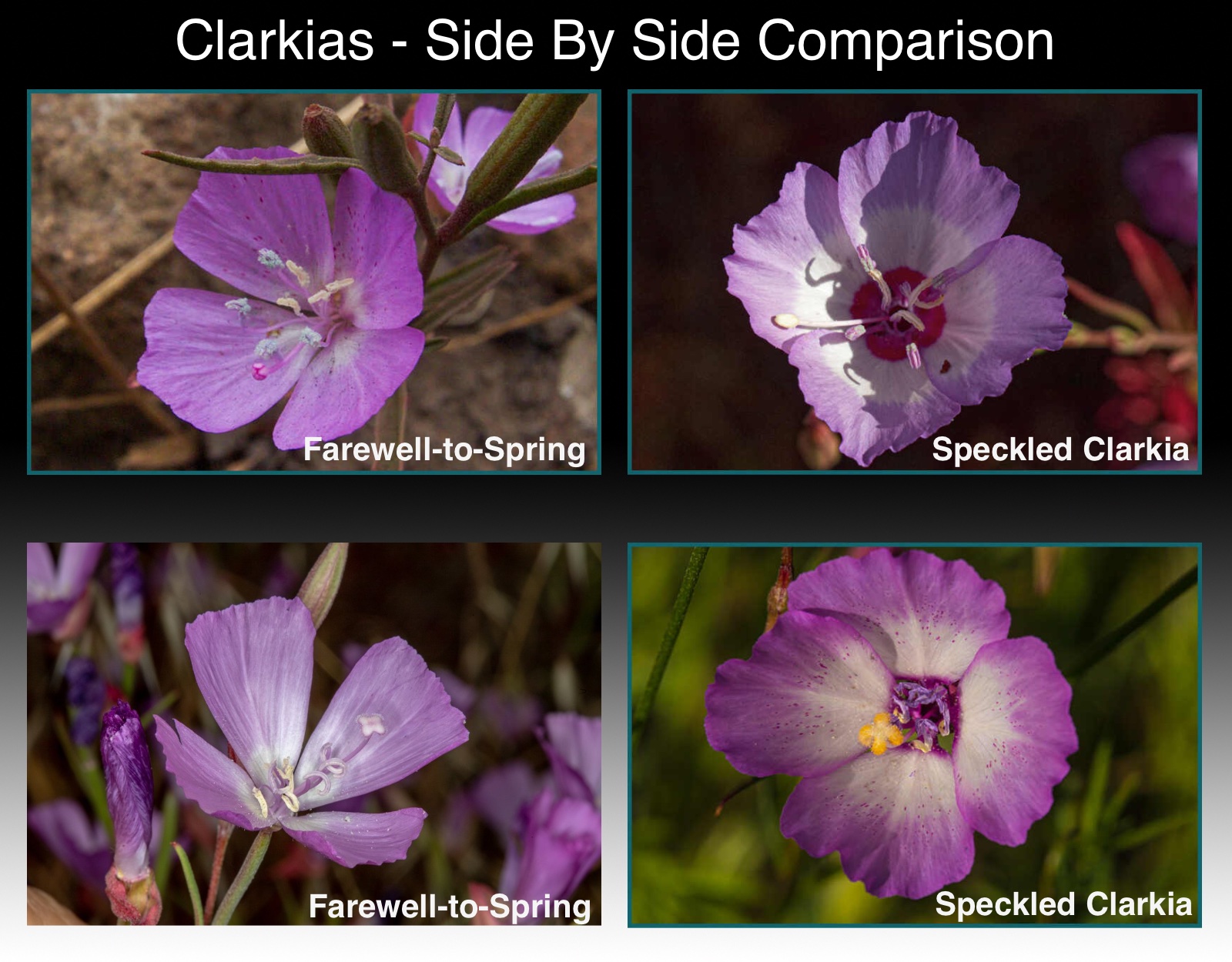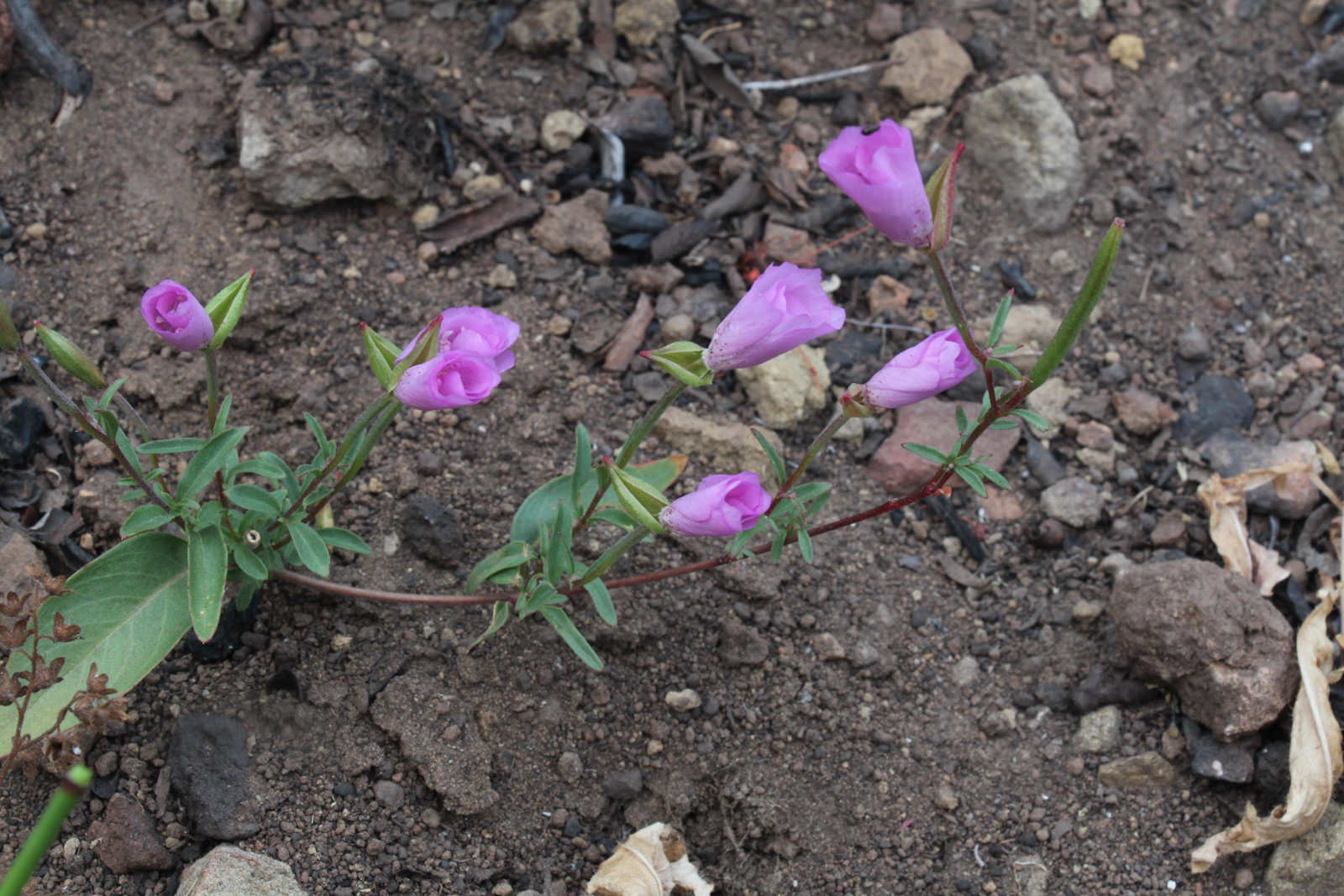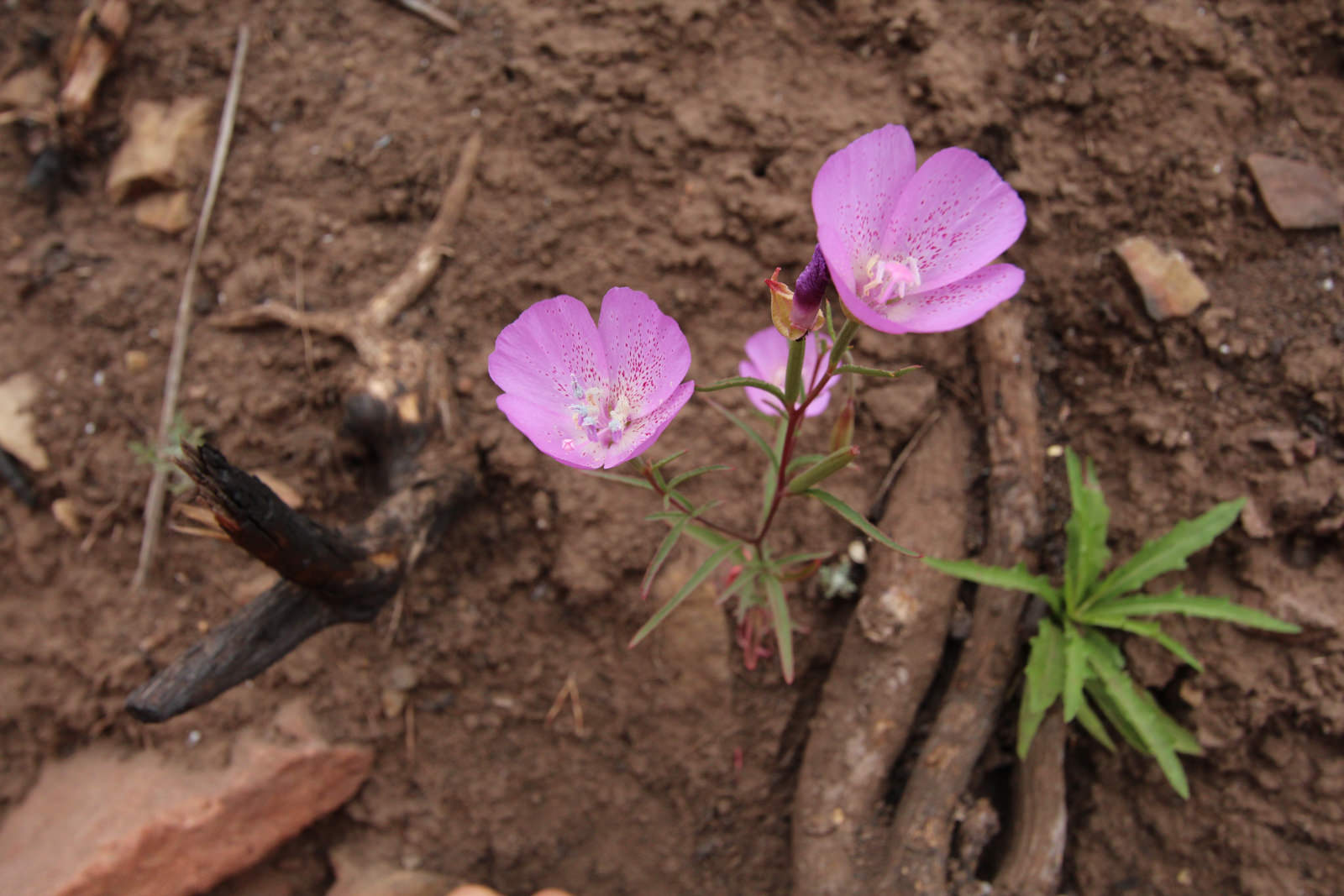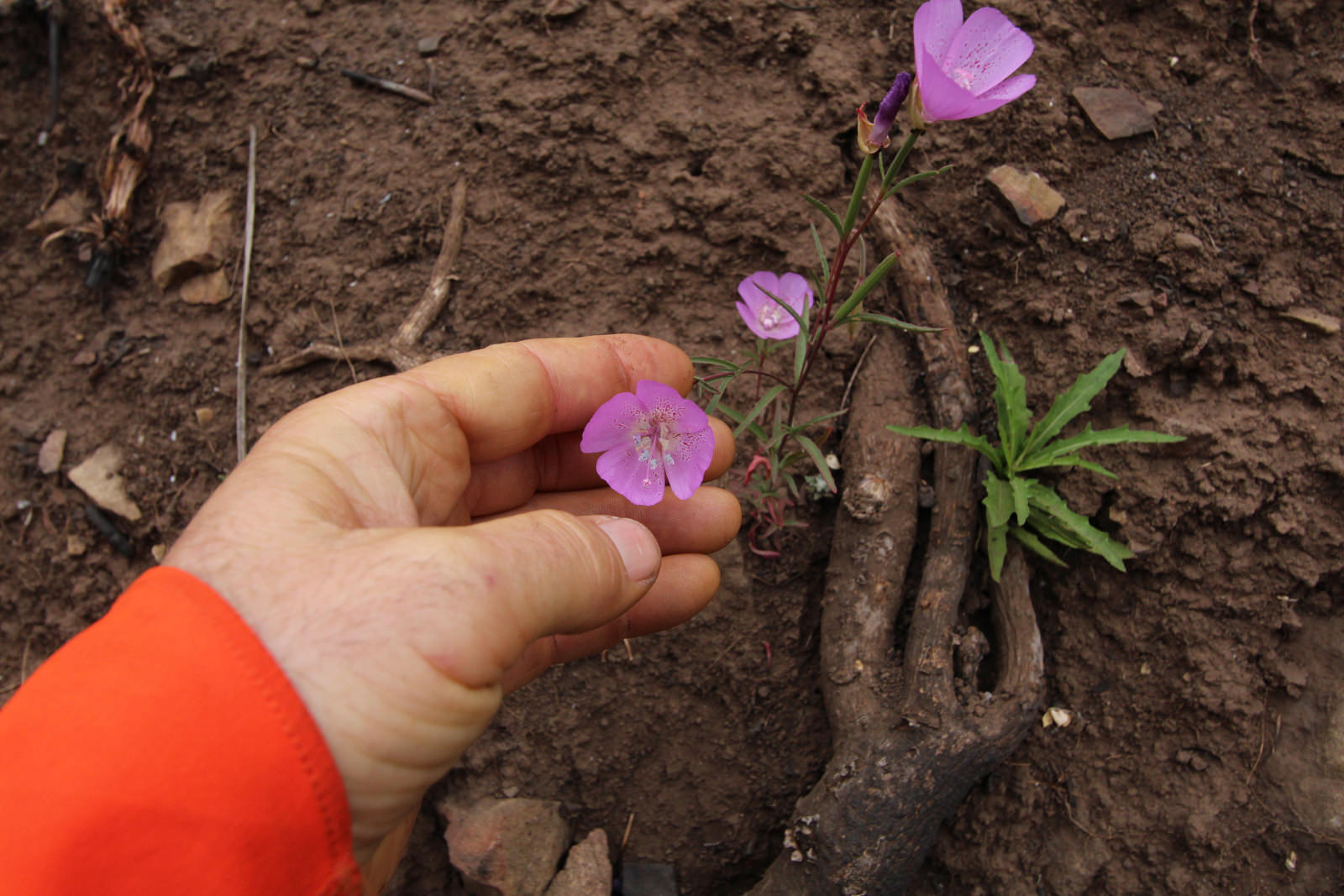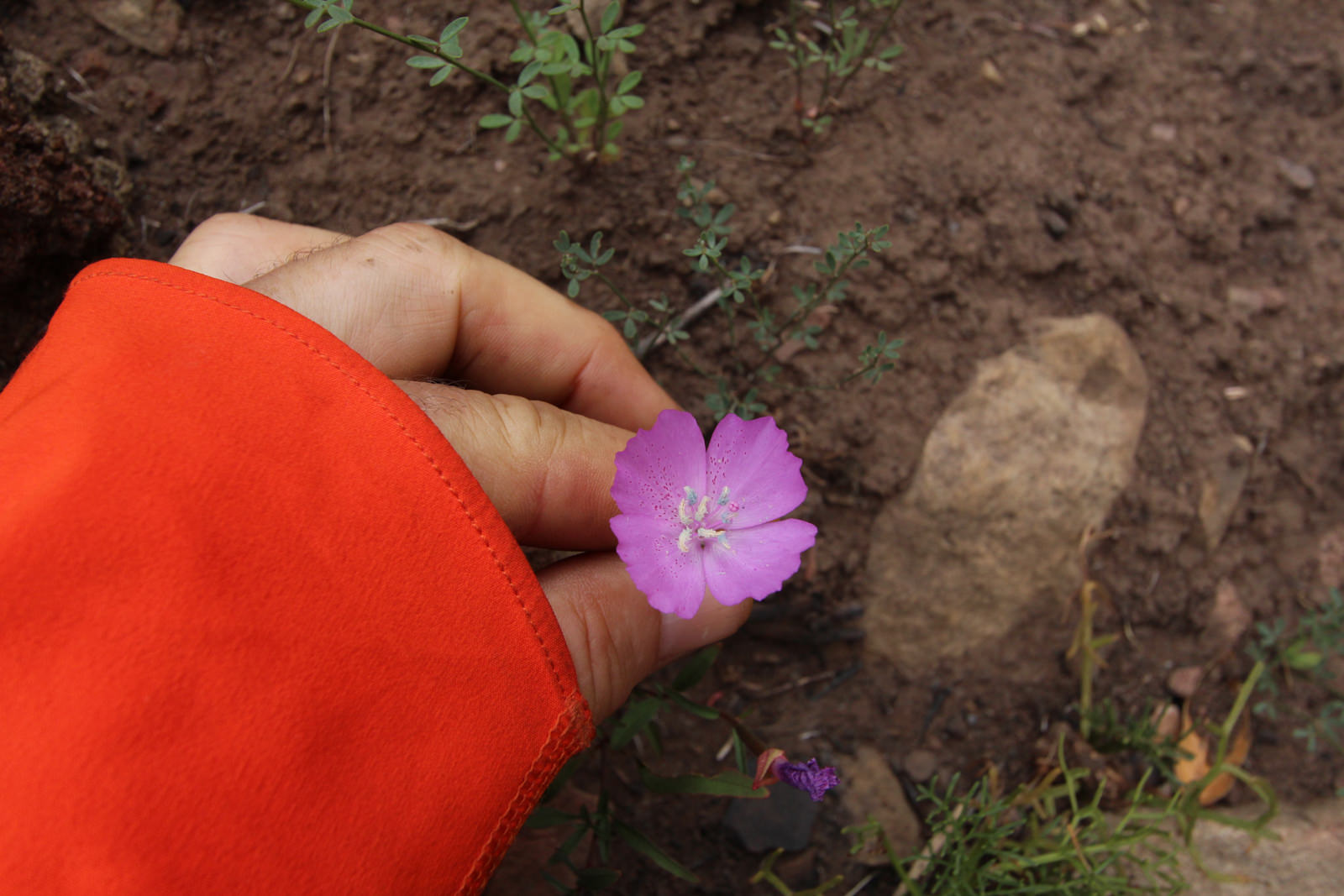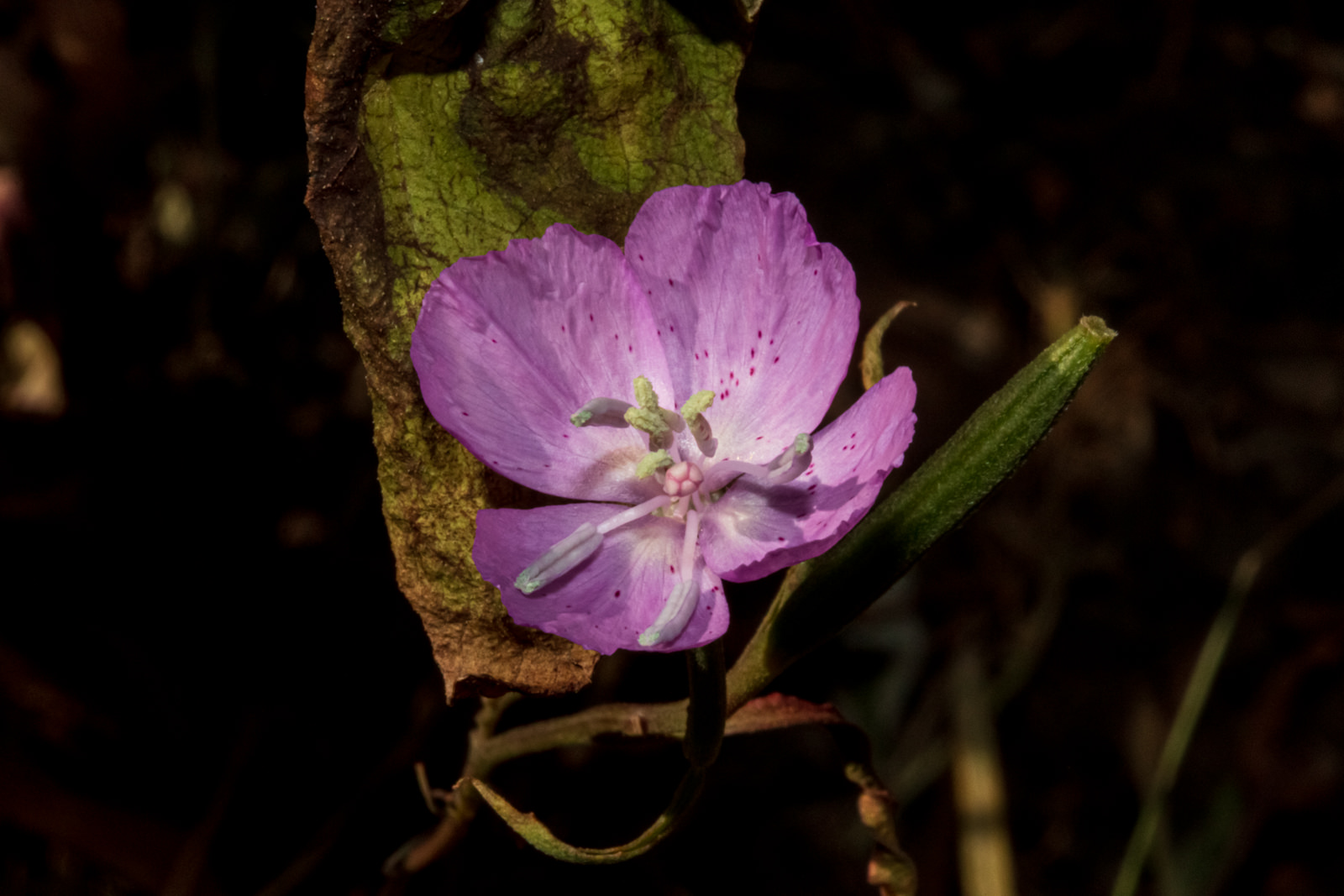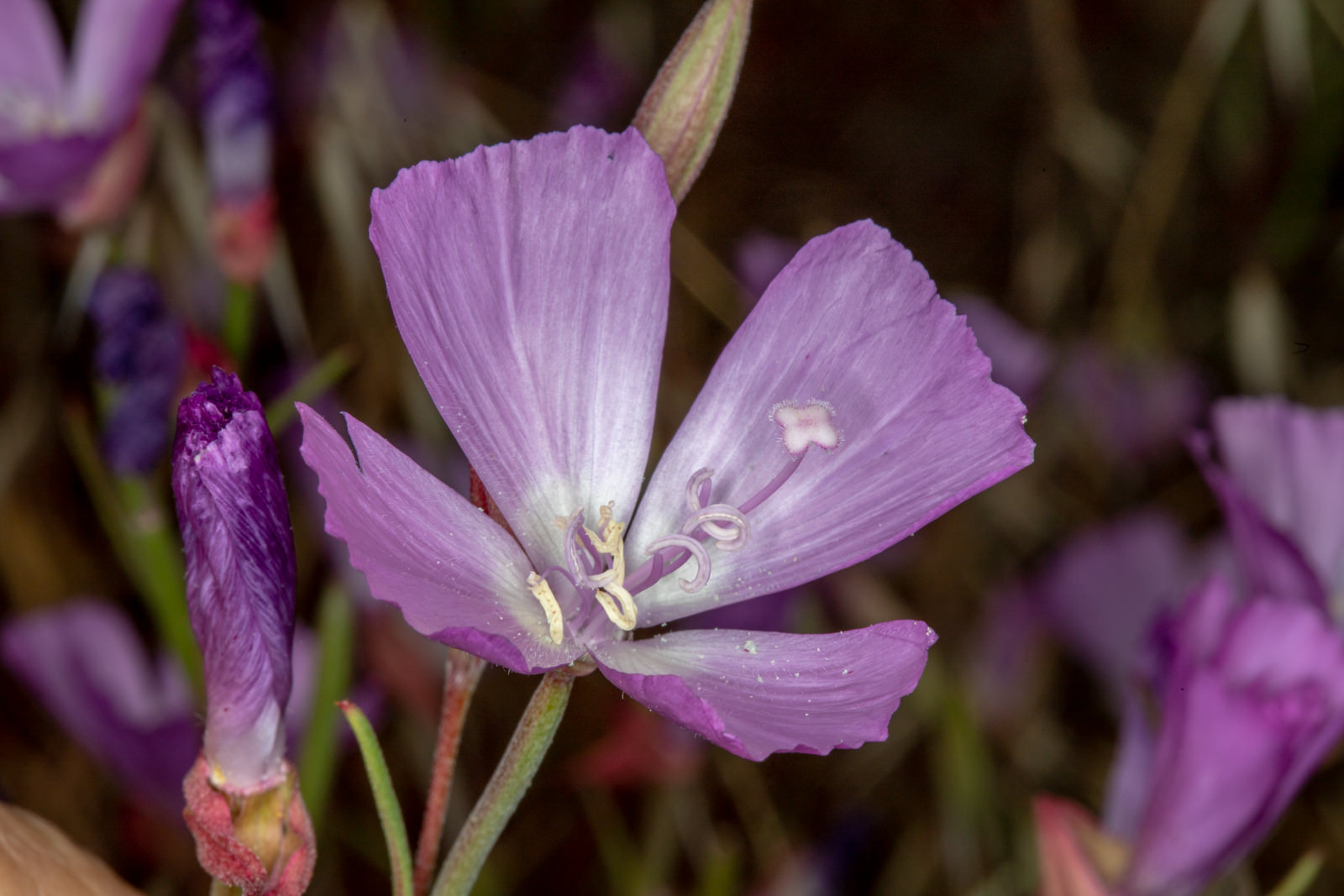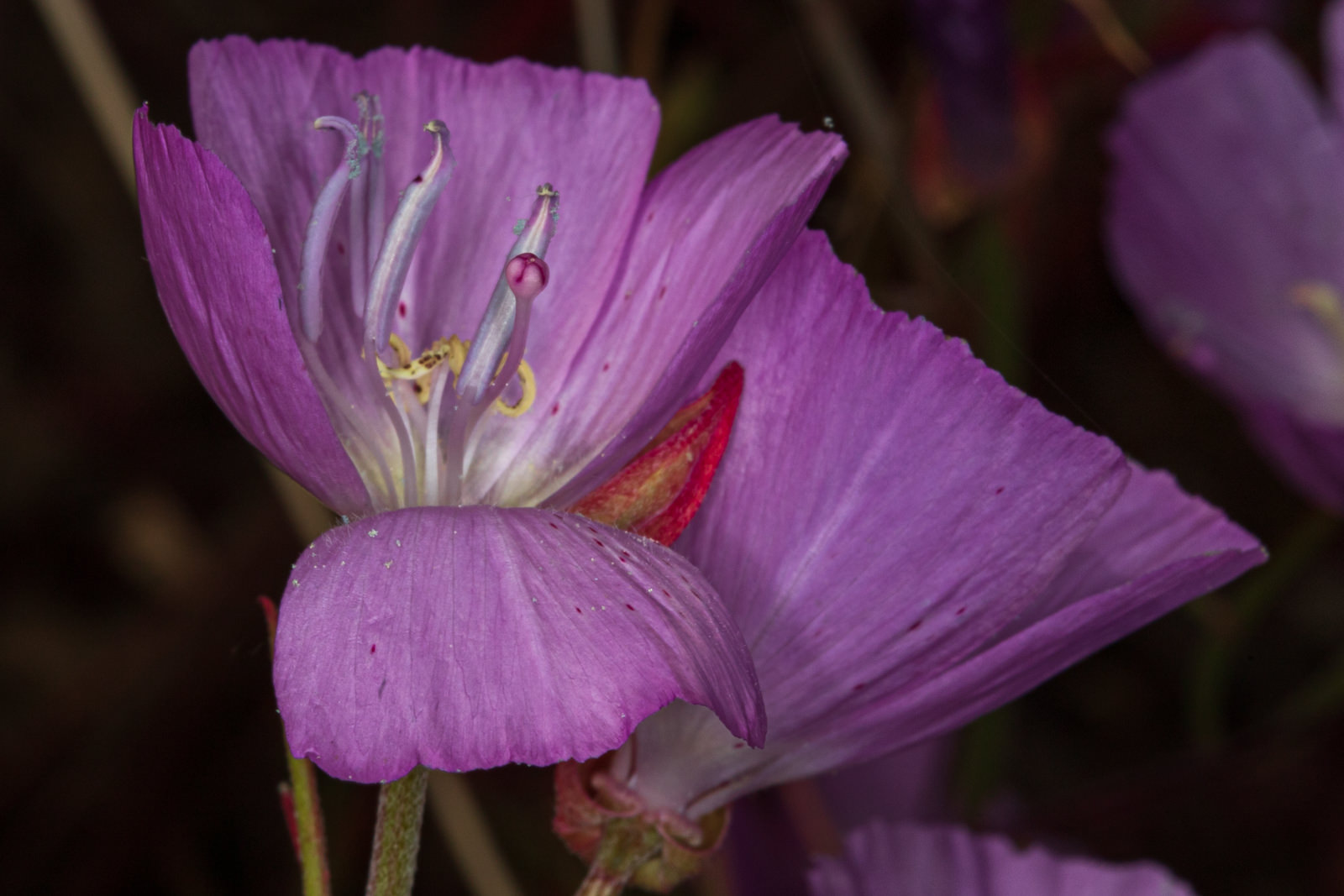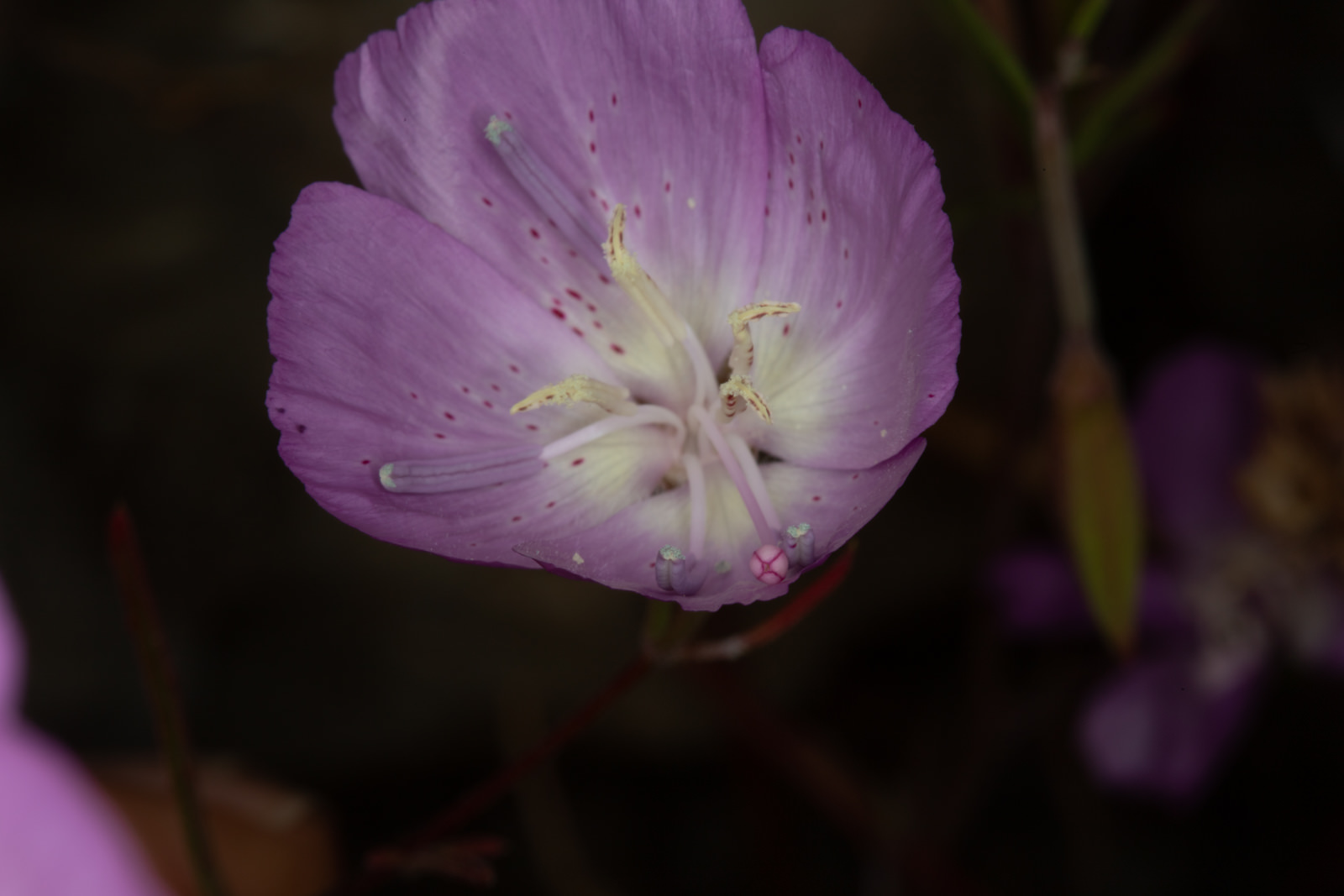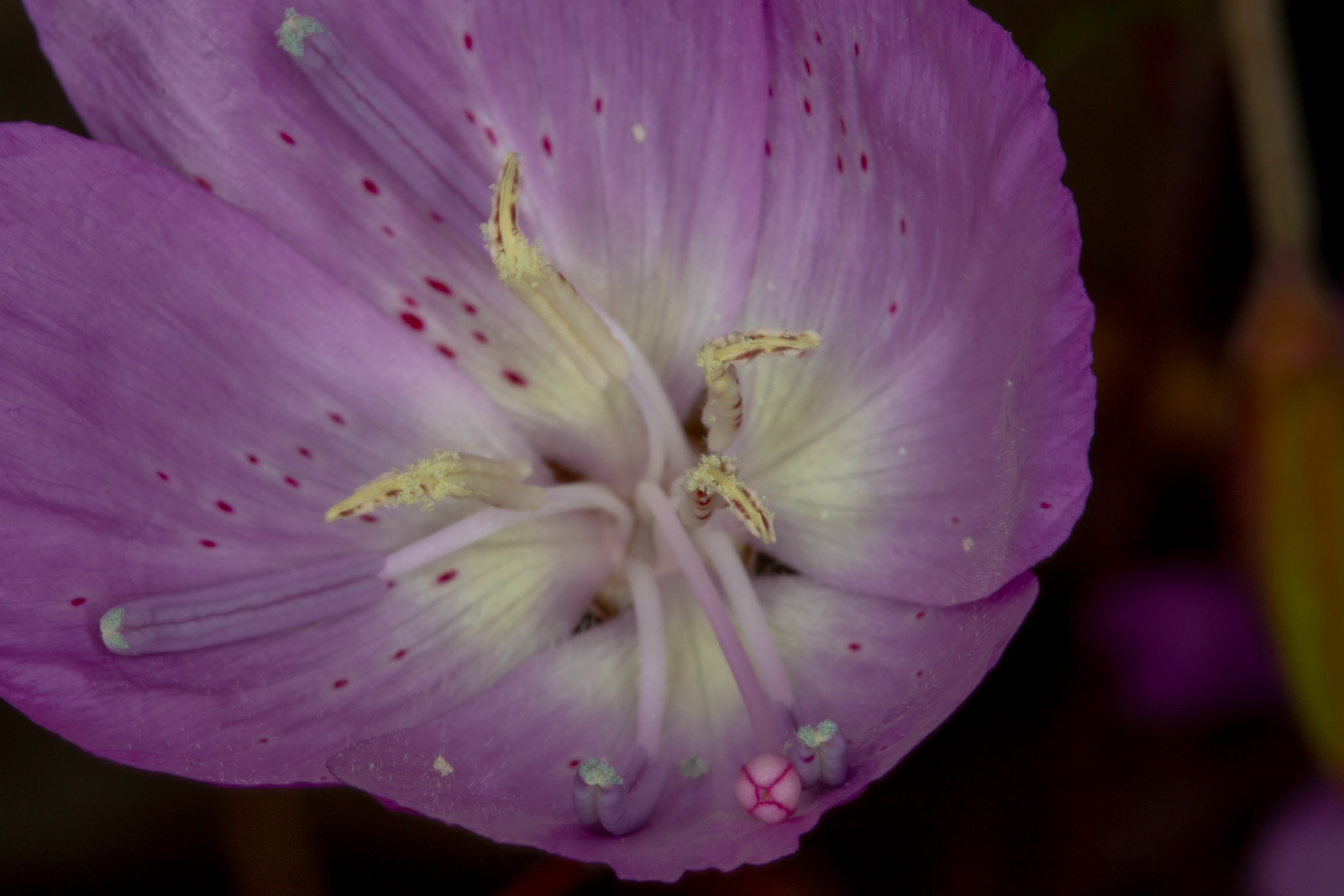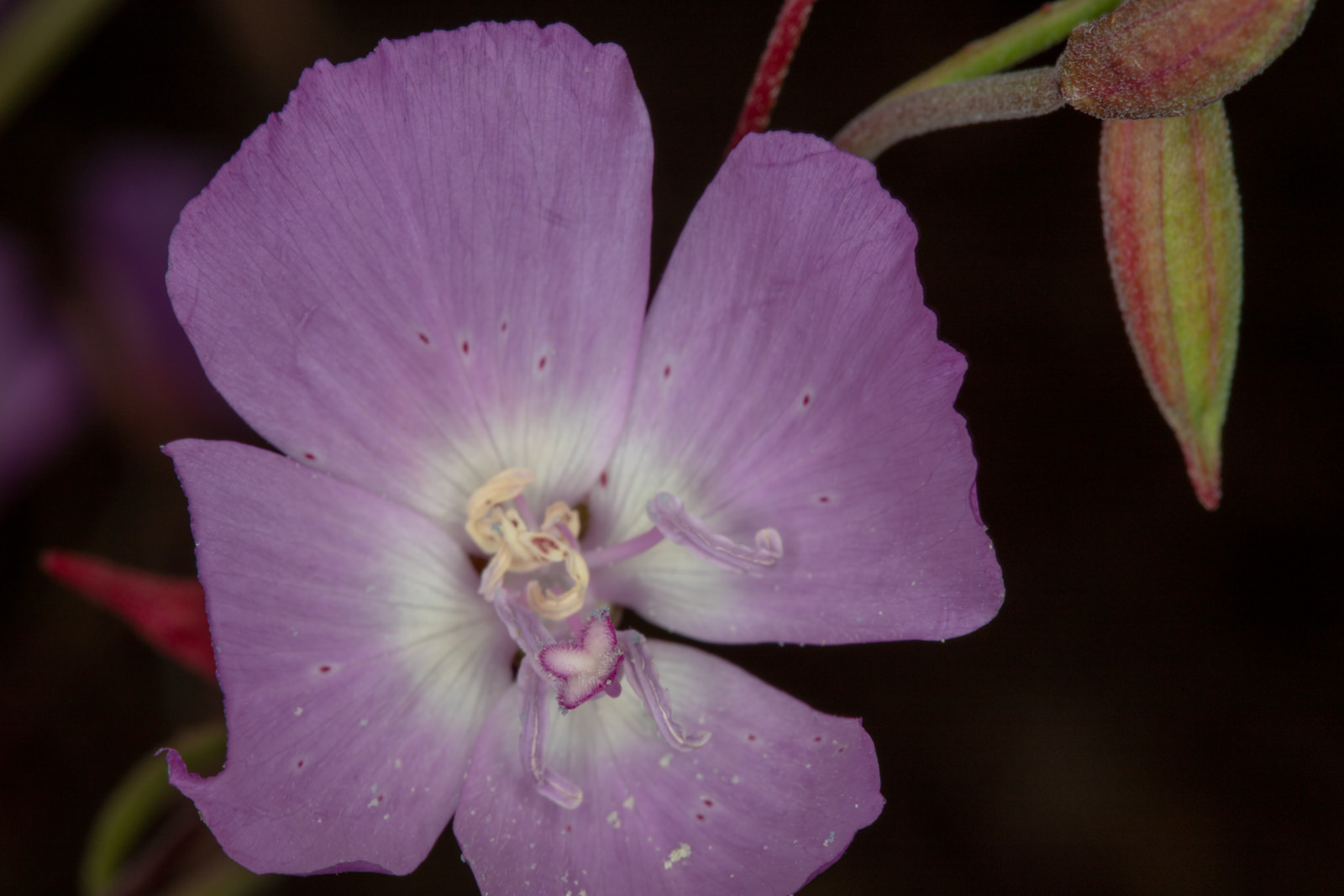Farewell-to-Spring
- Clarkia bottae
| Common Name(s): | Farewell-to-Spring |
| Scientific Name: | Clarkia bottae |
| Family: | Onagraceae (Evening Primrose) |
| Plant Type: | Annual |
| Size: | up to 3 feet |
| Habitat: | Coastal Sage, open slopes |
| Blooms: | April to July |
| Fire Response: | Germinate from Seed |
Aptly named, the blooms of Farewell-to-Spring Clarkia bottae - signal that the peak of the Spring bloom is over. The Farewell-to-Spring flower is bowl shaped, pink to lavender in color, often speckled with red and blooms from late April to July (depending on the timing and amount of rain). Botanist use the word pendant to describe how the flower buds hang downward before changing position when the flowers open. You can see this in several of the images. The stigma protrudes from the corolla and is surrounded by shorter stamens. I found it fascinating to watch the stigma change over time from an orb like structure to a fuzzy nearly cross-like structure. Clarkia bottae grows on spindly stems and and is sparsely outfitted with narrow leaves.
- White to lighter colored center - Farewell-to-Spring Clarkia bottae
- Red center - Speckled Clarkia Clarka cylindrica
- Both can have red speckled pigment (or NOT!)
- Stigmas are a bit different - Fare-well-to-Spring is not as "cross like"
Clarkia bottae is endemic (grows natively only in our state) to California. Native peoples farmed (sowed the seeds and harvested them) of this plant to use the seeds for food (after grinding them). For a much deeper dive into this plant I recommend the following link: Tom Chester's website
Link to Calflora.net - the best source of this fascinating information.
Name Origin: Clarkia Clarkia is named for William Clark (1770-1838) who with Captain Meriwether Lewis made the first transcontinental expedition from1804 to 1806.
bottae:after the variously named Paulo Emilio Botta or Paul-Émile Botta (1802-1870), Italian/French diplomat and archeologist
Contributed by George Sherman
Featured Plants in the Onagraceae (Evening Primrose) Family:

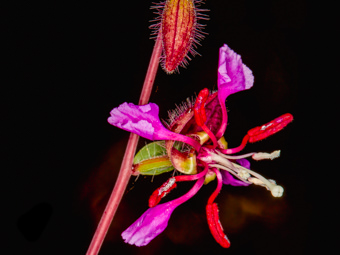
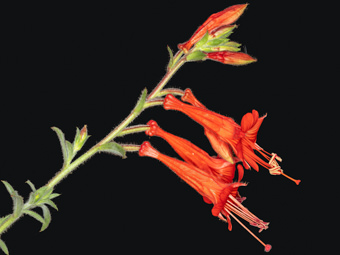
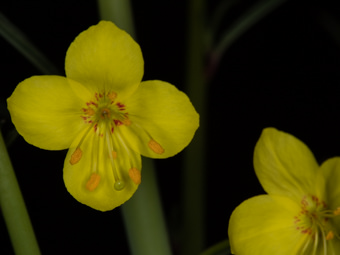
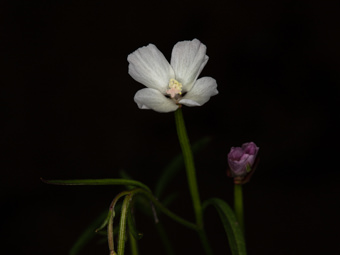
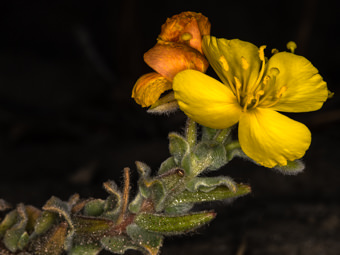

Last modified: August 21 2024 15:18:58.
Number of Images: 11
Image Size Total: 2,642,777
References:
Wildflowers of the Santa Monica Mountains, by Milt McAuleyFlowering Plants: The Santa Monica Mountains, Coastal and Chaparral Regions of Southern California, by Nancy Dale
Chumash Ethnobotany: Plant Knowledge Among the Chumash People, by Jan Timbrook
Leaf Shapes Primer - Botanical Terms for Leaves: - Link
